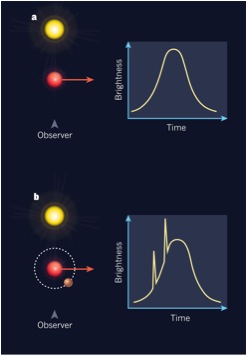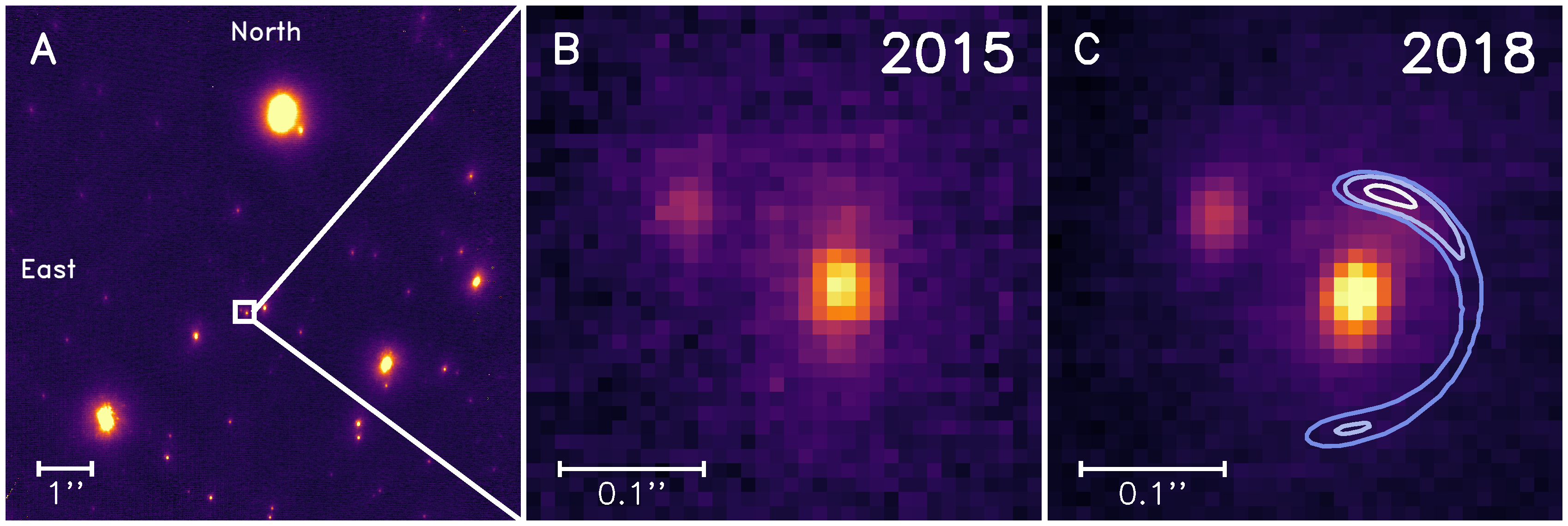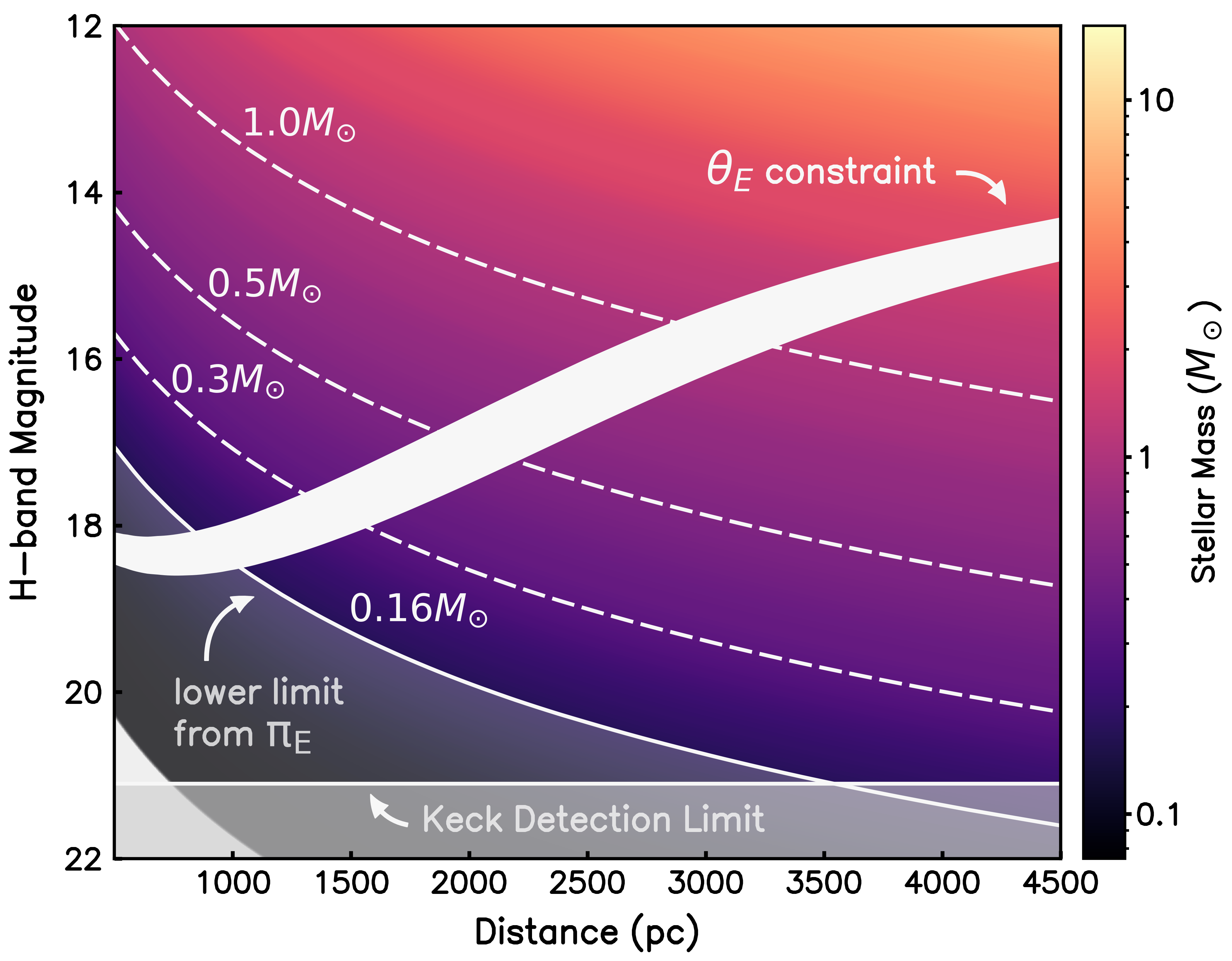what happens to jupiter when the sun dies
Title: A Jovian counterpart orbiting a white dwarf star
Authors: J. W. Blackman, J. P. Beaulieu, D. P. Bennett, C. Danielski, C. Alard, A. A. Cole, A. Vandorou, C. Ranc, S. K. Terry, A. Bhattacharya, I. Bail, Due east. Bachelet, D. Veras, N. Koshimoto, V. Batista & J. B. Marquette
First Writer'south Institution: Schoolhouse of Natural Sciences, University of Tasmania, Hobart, Australia
Status: Published in Nature [closed access]
Have you lot ever wondered nearly the fate of the Earth? Humans have simply existed for a tiny fraction of the Earth's lifetime since it formed. Even though we cannot predict what happens on the surface of the Earth, the planet equally a whole will probably survive billions of years into the hereafter. The fate of the Earth depends on the fate of the Sun, which brings u.s. to the study of stellar evolution. During its principal sequence phase, the Sun fuses hydrogen into helium in its core. When that hydrogen runs out, the Sun will go a cerise behemothic . Its core will contract under gravity and the outer layers will expand past the orbit of Mercury. The Earth will very likely exist engulfed by the Sun in about 8 billion years. Somewhen, the Sunday will shed its outer layers and the remaining core will be a white dwarf, simply the Earth would be long gone by so. It'southward a picayune sad to remember that our planet will not survive the aging Dominicus, but what about other planets further out in the Solar system? What about Jupiter, or planets beyond that?
Since we cannot fast forrard the evolution of the Sun, we can wait for other planets around other stars that are in the late stages of their lives. If in that location are any exoplanets orbiting a red giant or a white dwarf, that will give us a glimpse into our ain future.
How to detect planets with microlensing
The three most popular methods to observe exoplanets are radial velocity, transit, and straight imaging. With the first two methods, astronomers are looking for planet-induced periodic variations in the velocity or the brightness of the host star. The effect is more noticeable if the planets are bigger, more massive and if they orbit closer to the host star. The straight imaging method works best when the planet is big and orbiting very far from the host star. These detection biases are not platonic when we desire to detect planetary systems like our own. For that reason, the authors of today's paper turn to gravitational microlensing.
The microlensing technique detects the magnification of a background star due to the gravity of a lensing object passing in front of it (see this astrobite for an exoplanet survey with this technique). When 1 star (the lens) passes in front of another (the source), gravitational lensing amplifies the light from the source. If the lens star has a planet orbiting effectually it, and the planet lies well-nigh the star'southward Einstein band , its gravity causes an boosted fasten in the measured intensity from the source.
Lensing events are rare, only their occurrence is less dependent on the properties of the planet, giving united states of america a more unbiased probe of exoplanet populations. In addition, the lensing technique is sensitive to earth-like planets around absurd stars. This was the kickoff method capable of detecting planets of Earth-like mass effectually ordinary master-sequence stars.

Figure ane: Schematic illustrating the microlensing technique. When a star (the lens) passes in front of some other (the object), gravitational lensing boosts the lite measured from the object (part a). When the lens is orbited by a planet and the planet intersects the lens's Einstein ring, its gravitational field provides another heave to the measured intensity. These additional boosts can exist used to observe new planets. Effigy from Chambers (2010) and caption from Sukrit Ranjan.
The planet with a missing host
The authors of today's paper detected a planet using microlensing, only they did not detect light from a principal-sequence star host. The microlensing upshot in question, MOA-2010-BLG-477Lb, was found by the Microlensing Observations in Astrophysics collaboration in 2010. The researchers fit models to the microlensing lite curve assuming the host star is a principal-sequence star and plant that the best fit is 0.15 to 0.93 solar masses. The all-time fit solution also has a planet betwixt 0.5 to ii.one Jupiter masses. Given the estimates of the lens star's proper motion, the squad could predict where it would move with respect to the source star after the microlensing event. They used the Keck II telescope to obtain follow-upward images, shown in Fig 2. The contours in panel c show the expected location of the possible main-sequence host, but there's no star to be plant! If there is no main-sequence star detected merely the mass of the star is known, what could the host maybe be?

Fig 2. Panel a: an image in 2015 of the microlensing event MOA-2010-BLG-477. Panel b: a zoom-in view, the bright object in the center is the background source star. The faint emission to the northeast (top left) is an unrelated star. Panel c: the same field in 2018, where the contours betoken the probable positions of a possible chief-sequence star host from the microlensing assay, but no such host is detected in the paradigm. Reproduced from Figure 1 in the paper.
The host tin can merely be a white dwarf
The lensing analysis constrains the predicted effulgence of the lens star, which depends on the unknown lens distance. Fig. three shows that the range of possible master-sequence lenses for the outcome would all exist brighter than the Keck detection limit. Since no such star is observed, the lens cannot be a primary-sequence star. The lens star too cannot be a brown dwarf because the lens organization is at least 0.15 solar masses. Similarly, the upper mass limit of 0.78 solar masses rules out neutron stars and blackness holes as the host stars. As main-sequence stars, brown dwarfs, neutron stars and black holes are ruled out, the authors conclude that the lens must be a white dwarf.

What does this mean?
Main sequence stars similar our Sun evolve violently into white dwarfs. Our World nigh likely will not survive the Sun'due south crimson giant phase, but simulations predict that planets in Jupiter-like orbits can survive. This organization is the first observed Jupiter analog orbiting a white dwarf, prove that planets around white dwarfs can survive the giant phases of their host'southward development. This organisation represents a possible end stage of the Sun and Jupiter in our ain Solar Organization.
Astrobite edited past Macy Huston
Featured prototype credit: J. W. Blackman
- About the Author
Source: https://astrobites.org/2021/10/23/jovian-analog-around-white-dwarf/#:~:text=When%20that%20hydrogen%20runs%20out,past%20the%20orbit%20of%20Mercury.
0 Response to "what happens to jupiter when the sun dies"
Post a Comment